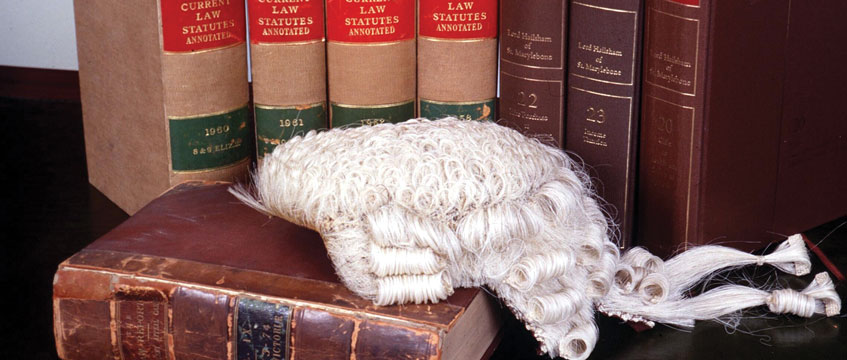The provisions for restoring disclaimed leases to their rightful owner can be relatively straightforward where the company is incorporated in England and Wales. A recent case – Trident Nominees (IOM) Ltd and others v Shaftesbury Properties Ltd and others (unreported, 2021) – examined whether a lacuna in the law exists where there is a common law disclaimer of the assets of offshore companies, rendering such assets lost.
It is commonplace for leasehold properties to be owned by a company which is then struck off the register because of administrative oversights.
Where the company is incorporated in England and Wales, the statutory protections under the Companies Act 2006 provide a simple solution to the recovering of assets on the restoration of the company. But the Act does not apply to a company not incorporated in E&W.
Trident concerned a company, Stafford Park Ltd, incorporated in the Isle of Man. SPL faced the prospect of losing a 999-year lease of premises in Camden (valued in excess of £2m) owing to it being struck off the register.
On 18 July 2017, due to an administrative oversight, SPL was struck off the register. The lease thus vested in the Crown as bona vacantia. The freeholder learnt of the striking off and corresponded with the Treasury Solicitor, who issued a notice of common law disclaimer of the lease on 13 September 2019. On 21 August 2020, SPL was restored to the register in the IOM.
Had this been an E&W company the answer would be clear, by reason of statute and legal authority. The Act introduces “as you were” provisions. By these provisions, post restoration, the company is treated as if it had not been dissolved.
In Mistral Asset Finance Ltd v Registrar of Companies and HM Attorney General [2020] EWHC 3027 (Ch), HHJ Halliwell (sitting as a High Court judge) said: “In my judgment, it can now be taken to be settled law in England and Wales that a statutory disclaimer of land deemed bona vacantia does not, in itself, survive the restoration of a dissolved company.”
Thus, on an E&W company being restored to the register, the leasehold land revests in the company and the Crown’s disclaimer can be ignored.
However, Mistral and earlier cases (eg Re Five Star Properties Ltd [2015] EWHC 2782 (Ch)) are concerned with statutory disclaimers. They do not address the situation that arose in Trident, where the company owning the property is situated outside E&W.
The situation in Trident
Until now there has been no decision addressing the Trident situation. Parties have sometimes sought to rely on sections 3(5) and 181 of the Law of Property Act 1925 (eg UBS Global Asset Management (UK) Ltd v Crown Estate Commissioners [2011] EWHC 3368 (Ch); [2011] PLSCS 151 and Quadracolour Ltd v Crown Estate Commissioners [2013] EWHC 4842 (Ch)). However, there is no decision that establishes that such reliance is justified.
In Trident, the relevant provision of the Companies Act 1931 (IOM), namely section 273B(9), contained similar “as you were” provisions providing that on restoration “the company shall be deemed to have continued in existence as if its name had not been struck off the register”. However, that Act did not help with an E&W lease. Attention therefore focused on the common law.
SPL contended that a defeasible title to the lease vested in the Crown as bona vacantia at common law by prerogative right of the Crown; that title was defeasible and would revert to SPL on its restoration. In the alternative, the court could make a vesting order under section 181 of the 1925 Act.
The freeholder disagreed. It contended that the Crown had no power to disclaim the lease by common law and, relying on the Crown’s surrender post-dating the common law disclaimer, said that SPL had lost its lease. They further contended that the court did not have power under section 181 of the 1925 Act to make a vesting order because the legal estate under the lease did not determine “by reason of the dissolution of a corporation” but by reason of the Crown’s subsequent actions in either disclaiming or surrendering. If the freeholder was correct, this would leave a lacuna in the law.
The Crown was joined as a party to the case. It contended that it did have a common law power to disclaim the lease, and that SPL’s restoration revested the lease in SPL. The Crown supported its contention by serving witness evidence, detailing its longstanding practice of disclaiming assets.
Shortly before the trial, the parties compromised their dispute. A declaration was agreed by all parties, save the freeholder (who did not oppose it) that on SPL being restored to the register, the lease continued in existence as if SPL had never been dissolved; and the lease reverted to SPL. Master Pester was satisfied, on reading submissions and other documents provided, that it was proper to make the above declaration.
Lessons learnt
The settlement of the case means that the world is deprived of a reported decision dealing with the fate of leasehold property, owned by an offshore company, where the leasehold property was disclaimed by the Crown. However, the Crown’s involvement in Trident reveals that common law disclaimers are not unusual. In the past six years there have been more than 50 disclaimers each year. It would be surprising if the Crown’s consistent practice does not reveal the true state of the law.
Should the Crown’s power to disclaim at common law be questioned again, it is hoped that Trident may offer guidance to those affected by that disclaimer.
Mark Warwick QC is head of chambers at Selborne Chambers, Rudi Ramdarshan is a senior litigation partner and Jonathan Chan is a litigation partner at Ronald Fletcher Baker LLP, they acted as counsel and solicitors for SPL respectively







